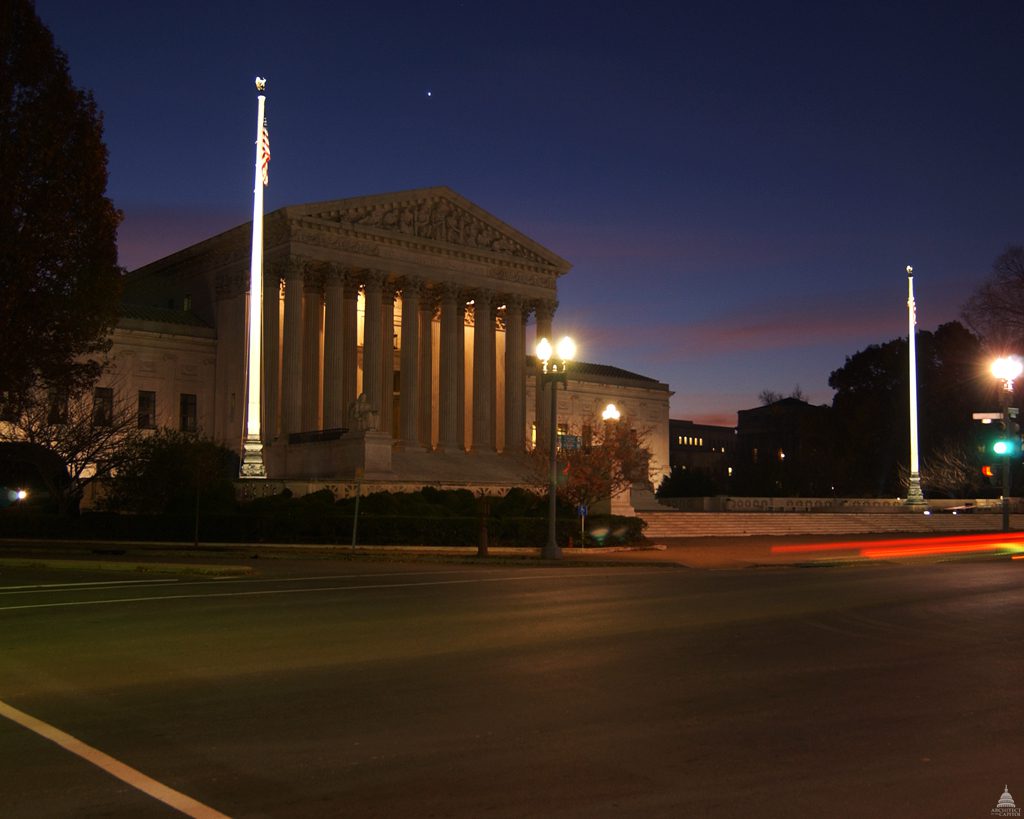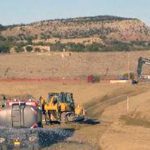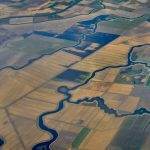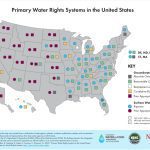- Nebraska accuses Colorado of breaking the South Platte River Compact.
- Colorado says the case is premature and the canal is still in planning.
- The Perkins County Canal sits at the center of the dispute.
- Eminent domain across state lines could become a test case.
- Both states trace the conflict to changing river use and growing demand.
- The Supreme Court will decide if the fight is ready for its docket.
Thursday, October 16, 2025 — A century after Colorado and Nebraska signed the South Platte River Compact , the two neighbors are back before the U.S. Supreme Court. Nebraska’s complaint, filed earlier this year, claims that Colorado has been taking more than its fair share of river water and interfering with Nebraska’s long-delayed plan to build the Perkins County Canal — a project first authorized in 1923 but never finished.
, the two neighbors are back before the U.S. Supreme Court. Nebraska’s complaint, filed earlier this year, claims that Colorado has been taking more than its fair share of river water and interfering with Nebraska’s long-delayed plan to build the Perkins County Canal — a project first authorized in 1923 but never finished.
Nebraska says the losses are real and measurable. In its filing , the state claims Colorado’s diversions and water-management programs have “deprived Nebraska of as much as 1.3 million acre-feet of water” and forced the Western Irrigation District to “shut off the majority of its surface water irrigation due to lack of supply.” The suit argues that Colorado’s modern groundwater-recharge and “augmentation” plans — which allow certain wells to operate if replacement water is provided later — violate the straightforward delivery rules the Compact was designed to enforce.
, the state claims Colorado’s diversions and water-management programs have “deprived Nebraska of as much as 1.3 million acre-feet of water” and forced the Western Irrigation District to “shut off the majority of its surface water irrigation due to lack of supply.” The suit argues that Colorado’s modern groundwater-recharge and “augmentation” plans — which allow certain wells to operate if replacement water is provided later — violate the straightforward delivery rules the Compact was designed to enforce.
Colorado, meanwhile, tells a different story. Its reply brief filed yesterday insists that Nebraska’s lawsuit is premature, pointing out that the canal is still in early planning and permitting stages. The state says there is “nothing for Colorado to interfere with” because construction has not yet begun and no condemnation cases have been filed.
filed yesterday insists that Nebraska’s lawsuit is premature, pointing out that the canal is still in early planning and permitting stages. The state says there is “nothing for Colorado to interfere with” because construction has not yet begun and no condemnation cases have been filed.
Why the Perkins County Canal Matters.
Under Article VI of the Compact, Nebraska was granted the right to build a canal starting near Ovid, Colorado, to divert up to 500 cubic feet per second during the non-irrigation season. The idea was to capture surplus winter flows for storage and later irrigation.
Colorado acknowledges that right, but says Nebraska is moving too quickly to claim harm. The canal’s precise route, engineering design, and environmental impacts are all being reviewed through the federal Clean Water Act permitting process, which Nebraska itself expects to complete by late 2028. The first virtual Army Corps session took place on October 1, 2025, marking only the beginning of a multi-year environmental study.
For Nebraska, however, the delay itself is part of the problem. The state argues that Colorado is expanding off-season water use in ways that could shrink the flows available once the canal is finally built.
Nebraska’s Claims: Lost Flows and Legal Frustration.
Nebraska’s legal team draws attention to the Compact’s clear language on river deliveries. Article IV requires Colorado to curtail certain post-1897 diversions whenever flows at the state line fall below 120 cubic feet per second during irrigation months. Nebraska contends that Colorado’s current system of augmentation and replacement water — designed for internal fairness between users — is inconsistent with that interstate rule.
The state also invokes Article VIII, which was written to make those delivery rules “self-executing,” meaning no new state laws were needed to carry them out. Nebraska says Colorado’s water-court structure and complex modeling have “muddled” what should be a simple matter of measuring flow at the Interstate Station.
At the same time, Nebraska has revived its century-old canal authority, purchasing at least one parcel in Colorado and beginning early coordination with federal agencies. It argues that Colorado’s resistance, whether active or implied, threatens a sovereign right that Congress ratified long ago.
Colorado’s Reply: Too Soon, Too Theoretical.
Colorado’s filing urges the Court to hold off. The state recounts how Nebraska sent letters to several landowners in early 2025 with threats of condemnation but then withdrew those notices without filing a single case. The state points to Nebraska’s own permitting timeline, which runs through December 2028, as evidence that the dispute is not yet ready for the Supreme Court’s attention.
In Colorado’s view, there is no physical interference, only speculation. It also stresses that Nebraska’s canal right is not unlimited: the Compact caps diversions at 500 cubic feet per second and specifies the starting point near Ovid. Any larger or relocated project, Colorado says, would raise new legal questions.
Colorado adds that its augmentation plans are carefully designed to prevent injury to Nebraska’s rights, replacing depletions with stored water when needed. It emphasizes ongoing cooperation, including letters and meetings since the 2022 drought, where officials from both states discussed flow timing and compliance.
Video: Colorado’s press conference:
The Jurisdiction Question.
Nebraska is asking the Supreme Court to take original jurisdiction, which means hearing the case directly rather than through lower courts. Because the South Platte River Compact lacks an interstate commission or arbitration mechanism, Nebraska argues that only the Supreme Court can decide how the canal’s cross-border authority and eminent-domain powers should function.
Colorado counters that not every disagreement between states warrants immediate Supreme Court review. It suggests that joint studies, technical workgroups, and the federal permitting process might resolve many of the issues before the justices are forced to weigh in.
Notable Statements From the Filings.
Nebraska on harm and scale: Colorado’s diversions have “deprived Nebraska of as much as 1.3 million acre-feet of water,” and the Western Irrigation District “was recently forced to shut off the majority of its surface water irrigation due to lack of supply.”
Nebraska on Article VIII’s design: delivery at the Interstate Station was intended to be “easily measurable and subject to objective verification,” without new statutes.
Colorado on present posture: “There is nothing for Colorado to interfere with,” given the early stage of design, permitting, and acquisitions.
Nebraska on the need for the Court: the Compact allows Nebraska to “exercise eminent domain” in Colorado, a sovereign-to-sovereign question that the Court should resolve.
What Happens Next.
As of mid-October 2025, Nebraska’s permitting and land-acquisition work continues, while Colorado maintains that the state line has seen no Compact violation that needs the Court’s intervention. Whether the justices agree that the dispute is ripe could determine not only the future of the Perkins County Canal, but also the modern meaning of a century-old promise to share the South Platte’s water.
The Supreme Court docket and filings are available here: https://www.supremecourt.gov/search.aspx?filename=/docket/docketfiles/html/public/22o161.html
FAQ
What is the South Platte River Compact?
A 1923 agreement, approved by Congress in 1926, dividing the South Platte River between Colorado and Nebraska. It sets flow requirements during irrigation months and grants Nebraska a winter-season canal right.
What is the Perkins County Canal?
A canal authorized by Article VI of the Compact to divert up to 500 cubic feet per second from near Ovid, Colorado, into Nebraska for off-season storage and irrigation.
Why is Nebraska suing now?
Nebraska says Colorado’s groundwater and recharge projects are reducing flows that the Compact guarantees, and that Colorado is obstructing Nebraska’s canal rights.
Why does Colorado say the case is premature?
Colorado argues the canal is still being designed and permitted, and there has been no tangible interference or completed construction to litigate.
Can Nebraska really condemn land in Colorado?
Article VI explicitly allows Nebraska to acquire canal property in Colorado by purchase or eminent domain — an unusual power now at the heart of the legal fight.
What’s the timeline from here?
Nebraska’s Army Corps environmental review is expected to run through December 2028. The Supreme Court will decide whether to take up the case under its original jurisdiction later this term.





